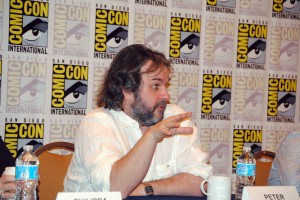 We all listened to and read Peter Jackson’s words from Comic-Con about three possible “Hobbit,” movies carefully. But we didn’t listen to all the words and we missed a few things.
We all listened to and read Peter Jackson’s words from Comic-Con about three possible “Hobbit,” movies carefully. But we didn’t listen to all the words and we missed a few things.
He told us. He told us — he did.
He said exactly what he meant, he said it plainly and the media and fans (and me) tried to figure out what he meant when he told us in plainness. Monday, Jackson dropped an atomic bomb of news and fandom reacted accordingly.
“The Hobbit,” adapted for the screen from the 300-page, 75-year-old book by J.R.R. Tolkien changed from from two movies to three in the blink of a Facebook post.
AMBITION
More on the words we ignored in a minute. We need to figure out when these films break, what it means for fans and websites and studios and cinema and the director, but lets not rush past the size and scope of this news. Lets not walk around Paris admiring all the cafes and churches without also pausing and noticing the big tower in the center of town.
We witnessed, the last few weeks since Comic-Con, something monumental, unprecedented, unparalleled and a little bit crazy. Jackson (and when we say “Jackson” we always mean the director and Walsh, Boyens and a team of others supporting their vision) is in unchartered territory here.
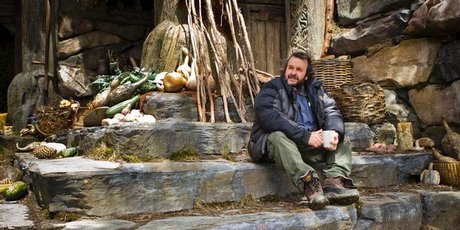 Before we examine what just happened, lets review to make sure we have the big picture in perspective:
Before we examine what just happened, lets review to make sure we have the big picture in perspective:
- Jackson, once best known for horror and inappropriate muppets, has built a filmmaking empire in what was once considered the more unlikely of spots in the world.
- He delivered an adaptation of J.R.R. Tolkien’s “The Lord of The Rings,” that previously was thought to be “unfilmable.” It was highly successful.
- He made fantasy films that went mainstream and became part of popular culture. (See “Dungeons & Dragons,” from 2000, just months before “Fellowship of The Ring,” to see how that usually turns out.)
- He won Academy Awards for a genre film, including Best Director, immortalizing him.
- He is a “Sir.”
- He doesn’t go to Hollywood, Hollywood comes to him — 15 hours away by air.
- He helped build what is currently considered the best, or at least among the elite, special effects house in the world.
- He reluctantly took on a pair of films based on “The Hobbit,” after initially deciding not to direct them.
- He decided to film in 3D and at 48fps when most theaters couldn’t (can’t) even exhibit the film at that rate. Hello boundaries? Meet Peter.
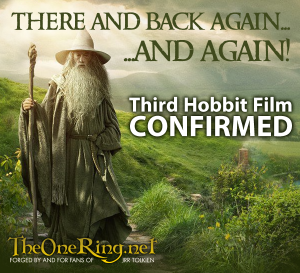 So this guy, already walking a tightrope and telling the media, “I’m very happy to be the guinea pig,” while the film industry watches his exploration of groundbreaking storytelling, decides to take on a little extra challenge.
So this guy, already walking a tightrope and telling the media, “I’m very happy to be the guinea pig,” while the film industry watches his exploration of groundbreaking storytelling, decides to take on a little extra challenge.
Oh and by the way, it is August. Let that sink in: It . . . Is . . . August. With “The Hobbit,” world premiere scheduled for late November and world-wide screenings set for December, there are approximately three months (or 90-days if you prefer) for Jackson to deliver a finished film complete with special effects, color timing, a score and marketing.
So with all of this in mind, Jackson takes an in-progress look at his films and decides three films would really be better than two. So he says, “Hey studios: We want to make three films, not two. I know we have them already named and a marketing plan is in place and all — but three would be better. By the way, we are going to need to shoot more footage for a couple of months (many complete movies only ever shoot for a couple of months — or less) and that is going to cost more money. We better have the behind-the-scenes team along too.”
And the studios, well, they said yes. Eventually we will hear if they said, “YES YES YES!” or if they said, “Well, uh, hmm, well, urrrr, yes.”
Look, this stuff just doesn’t happen. Big epic movies don’t get upsized and especially not months before release. “Ben Hur,” didn’t. “Apocalypse Now,” didn’t. “Lawrence of Arabia,” didn’t. “The Ten Commandments,” didn’t. And don’t tell me about “Twilight,” or “Harry Potter,” because they were planned as such.
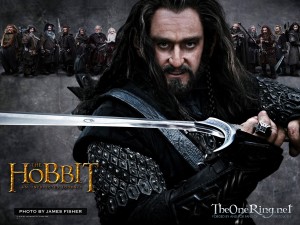 Jackson is Christopher Columbus here, sailing right off the edge of the map.
Jackson is Christopher Columbus here, sailing right off the edge of the map.
Whatever else happens, however these movies succeed or fail artistically and financially, nobody can ever claim the powers behind them didn’t swing for the fences. Mark this down and I sure hope somebody is taking notes, because the events of the last couple of weeks are going to be legendary. Soar or sink, the ambition at work here just boggles the mind. If your mind isn’t boggled a little, you aren’t fully grasping what happened. Also, how good are these behind-the-scenes stories going to be?
FOR THE STUDIOS
Large professional movie studios (big businesses) like MGM and Warner Bros. spend a lot of money but the do so by making smart risks and minimizing exposure. They plan and they execute the plan and they market and the have a lot of moving parts to make that happen.
The two “Hobbit” movies had titles and marketing plans and product tie-ins like toys and books and all manner of things. By now items are well in the pipeline. Licensing and marketing and publicity are working hard to make sure things go right in December. They don’t leave it to chance or wait until the last minute.
 When Jackson wanted to change and when he convinced studios to do it, the ground shifted under the feet of hundreds and maybe thousands of people. Film 1 books for example are well into production with those now dated movie titles in mind. Consider how complicated this becomes for book publishers who feature certain characters from Film 1 that might not be in the film any more. The same goes for action figures. The same goes for publicity tours and what if marketing laid plans to have support characters at premieres or press junkets when they no longer even appear in the film? I am sure I am missing a lot of people and plans that were disrupted on Monday.
When Jackson wanted to change and when he convinced studios to do it, the ground shifted under the feet of hundreds and maybe thousands of people. Film 1 books for example are well into production with those now dated movie titles in mind. Consider how complicated this becomes for book publishers who feature certain characters from Film 1 that might not be in the film any more. The same goes for action figures. The same goes for publicity tours and what if marketing laid plans to have support characters at premieres or press junkets when they no longer even appear in the film? I am sure I am missing a lot of people and plans that were disrupted on Monday.
To Jackson’s credit, he just wants to make what he feels is the best possible movie and he is willing to stick his neck out to do it.
Don’t think for one second that the studio just ships out a shorter movie and calls it a day. A gigantic machine, imagine the one that carried the space shuttle to the launching pad, was in motion with all its moving parts and the studio was willing to put it to a stop, change its direction and start it up again at a quicker pace than it is used to. This wasn’t done lightly and multiple studios had to sign off on it.
This is a big deal.
WHAT JACKSON SAID AT COMIC-CON
“It’s all very premature. We have got incredible source material with the appendices. The Hobbit is obviously the novel, but we also have the rights to use this 125 pages of additional notes that Tolkien expanded the world of The Hobbit that’s published at the end of Return of the King. We’ve used some of that so far, just in the last few weeks as we’ve been prepping out the shooting and thinking about the shape of the story. Eventually Philippa [Boyens] and Fran [Walsh] and I have been talking to the studio about other things that we haven’t been able to shoot and seeing if we could possibly persuade them to do a few more weeks of shooting. It’ll be more than a few weeks actually, a bit of shooting, additional shooting next year. What form that will end up taking, the discussions are pretty early so there isn’t anything to report. But certainly there’s other parts of the story that we’d like to tell that we haven’t had a chance to tell yet. So we’re just trying to have those conversations with the studio at the moment.”
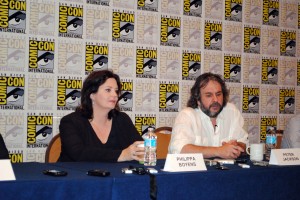 He said some pretty interesting things in there about appendicies and confirmed that he wanted to do more shooting. Its no wonder everybody focused on those things but he was dropping some other big clues and doing it repeatedly.
He said some pretty interesting things in there about appendicies and confirmed that he wanted to do more shooting. Its no wonder everybody focused on those things but he was dropping some other big clues and doing it repeatedly.
In Hall H in front of 6,500 people Jackson talked about the process of cutting films.
“ . . . it’s not until you get to the very end and you can start to look at a “cut” assembly of the film . . . Look, at the end of the day, you end up with a film that’s too long. And so for purely, for what the studio and the distributors need, you need to trim it down a little bit. Which we try and do. We’re not very good at making short movies, unfortunately.”
In the international press room, TORn staffer Quickbeam related (not quoted) that Jackson said virtually the same thing. In answer to a question about the length of the first film he quipped that it would be maybe two hours, two-and-a-half, (noticeable giggles in the room), two forty-five, three? (more laughter) followed by the same message. “Really, we’re not good at making short films.”
I heard him say the same thing to a different audience.
There it is. Twice — or thrice. Once to a room of 6,500 and then again to a potential video and television audience of millions: They were making longer films than the commercial ideal. Jackson not only said he wanted to make three “Hobbit” films, he said why, in detail.
SO NOW WHAT?
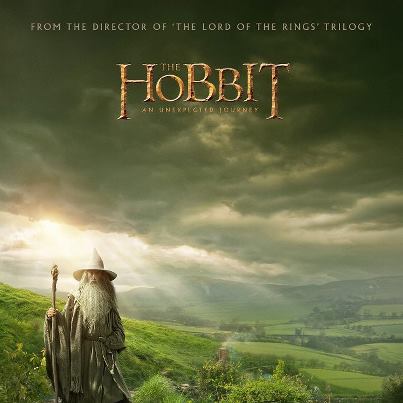 Now we can plan on three movies. We can still count on December 14th for the first film’s release, December 13th 2013 for the second film release and we confirmed “Summer 2014” with two sources for the final film. Warners gets a big tent-pole summer blockbuster out of it. Just a guess, but I bet that was part of the negotiations.
Now we can plan on three movies. We can still count on December 14th for the first film’s release, December 13th 2013 for the second film release and we confirmed “Summer 2014” with two sources for the final film. Warners gets a big tent-pole summer blockbuster out of it. Just a guess, but I bet that was part of the negotiations.
Details will unfold in the days, weeks or months ahead, but many or all of the cast and crew that just finished shooting on the two films will return to participate on the now three films. Again, Columbus sailed off the map. And the revelation and answer to all the flying rumors just creates a whole lot more questions. Because this is turning into a novella, we are only going to tackle one of these burning issues for now.
ADAPTATION
Jackson never said “bridge film.” I got that one wrong last week but I wasn’t alone. That idea never quite went away and all the talk about the appendicies, made it seem likely. But Jackson said three “Hobbit” films and that is just what he meant. In the process of adapting the book to a film, in the tradition of Tolkien, it was “a tale that grew in the telling.” (And hey! This article too!)
Jackson, thankfully, promised to do one thing differently than the book: He needed to flesh out the Dwarf characters. Dwarven culture, character and history needed to be revealed here; Each of Thorin’s company needed to have dialog and motives and story arcs and character development. This would take time, screen time and then whatever starts in the establishing film then needs to be finished in what comes next.
From my time on set, I cannot provide any details, but I can say it was my impression that the actors and the writers wanted fully realized characters on screen and not caricatures. This, for my movie-ticket-money, makes for a much better but longer film.
Other features besides Dwarves we already know about from the media that could chew up screentime:
- Evangeline Lily’s character of Tauriel
- Ringwraiths in tombs
- Radagast The Brown
- White Council
- Galadriel and Gandalf
- Dol Guldur
- Bilbo telling Frodo the story
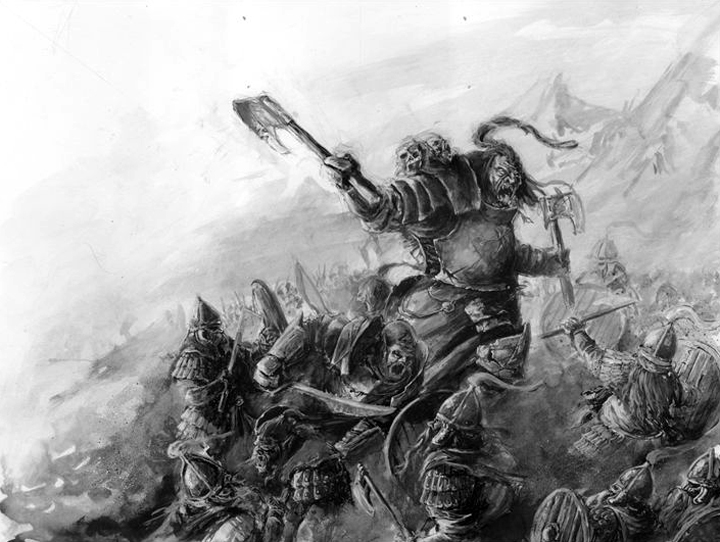 There are others, but the point is, this isn’t a direct translation of “The Hobbit” but an adaptation. The above is a list of major, and in my view appropriate, additions.
There are others, but the point is, this isn’t a direct translation of “The Hobbit” but an adaptation. The above is a list of major, and in my view appropriate, additions.
Another potential problem with the story from the beginning was Smaug. This creature should be the most magnificent dragon ever put to film. And while he isn’t on screen that much (unless there are major revisions) his looming presence is enormous from the moment Gandalf, Thorin and Bilbo discuss a map and a key. His storyline threatened to also be giant and magnificent and disruptive. In fact, way back in May 2008, I wrote, in an article called “The Dragon Problem,” that Smaug’s story was a threat to feel like a climax.
Jackson handled a somewhat similar problem in “Fellowship of the Ring,” with the Balrog, but that creature didn’t talk or have much depth and wasn’t haunting the company from the first moment. Anyway, Smaug was always going to be a big challenge for these films. Three films is a definite solution to that adaptation problem.
As the reality of two films became three in the minds of fans and casually-interested-parties across the social media universe, it was astounding to me how many people who were okay with a two-part adaptation were adverse to a three-part revision. Why? “Because it could never work.”
It may be an assumption on my part but I don’t think most of them have ever written a screenplay, much less adapted a book and know next to nothing about the process or what would work or wouldn’t work. Nevertheless, there was a reaction among many that “The Hobbit” could fill two films but never three. Since this belief is held by consumers, the perception matters even if it isn’t founded in any sort of experience or understanding of the adaptation process.
TORn staffer Kristen Thompson points out that The unabridged audio book is about 11 hours long.
I am no expert either, but it seems clear to me that not only does it have a chance to work, it has a chance to be better, partly because of Smaug. It could end with his * SPOILER ALERT * death but it could also end with his departure from The Lonely Mountain leaving the next film to focus on the battle at Laketown. If Smaug isn’t a big part of the finish, I agree to shave my head and skip the third film entirely.
HOW WILL THE THREE FILMS BREAK?
After years of speculation, the two-film break was absolutely locked when Entertainment Weekly released “Hobbit” images just before Comic-Con. The barrel escape from the Elves was the end of the first film.
How cool! How dated.
The evidence above, along with a collection of other hints and comments, make it clear (at least to me) that Film 2 was Film Too Long. Isn’t that just what Jackson was telling us at Comic-Con? I hear him saying that this collection of characters were compelling and busy and he couldn’t find a good way to keep the film to a manageable length without shortchanging the story. Just a stab here but I bet it was not a little bit long but significantly lengthy.
Whose lines and arcs are you going to clip? Dori’s? Nori’s? Bifur’s? Bofur’s? Fili’s?
And the writers didn’t flesh out the story and then want to cut all the flesh.
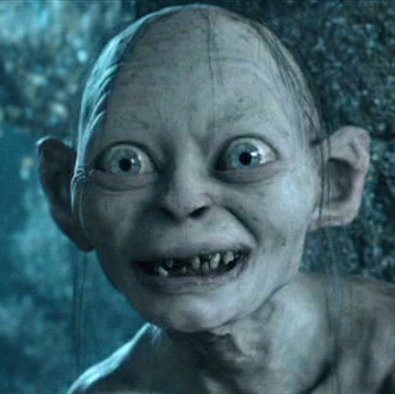 I risk sounding like a Jackson fanboy here but what I believe is what I believe.
I risk sounding like a Jackson fanboy here but what I believe is what I believe.
This change is not only bold and daring, it is coming from the right place. This isn’t a money grab. This isn’t the studio stretching out a franchise. This is team Jackson feeling that a story, a complicated one with multiple threads and characters, needed more time to tell.
Now, my inner devil’s advocate would say that Jackson is so powerful now that nobody can say NO to him and even if it is a bad creative idea, the studios involved want another movie. He, that inner devil, even fears that we could end up with films padded with invented extras instead of material adapted from the original source. I confess that the Gollum and Sam and Frodo conflict on the stairs in ROTK not only didn’t work for me, it still bothers me. Every viewer has his or her own taste and I still cherish the film. In this case, I think my inner devil’s advocate is wrong.
But I digress.
The ending of Film 2 is, I think, settled. So where will Film 1 end now? I took a TORn staff poll. Here are the responses in the order I received them.
“My vote for the ending of #1 is the dwarves getting captured in Mirkwood. – deej
I think it will be the capture by the goblins — Entmaiden
When they are captured by the wood elves after mirkwood — Linuxelf
I think the first movie now ends with them captured in Mirkwood. That allows for the second film to start with them escaping and ending with the death of Smaug. The third film dealing with The Battle of Five armies and some more background information type stuff. — Elessar
Where will the first film end? In the past, my best guess for the “split” was between “Flies and Spiders” and “Barrels out of the Bond”. But now I’m not so sure! Either way, the film could very well close with the greater goings on with The White Council and the Necromancer. — Celedor
I’m a bit torn on where the first film would end. My personal preference would be when Bilbo, the Dwarves and Gandalf are stuck up the trees with the Wargs and goblins getting the bonfire ready. — kelvarhin
As for where the first movie will end, Mirkwood seems the most logical, but I think that’s too far into the book to be able to stretch out the Hobbit plot for two more movies. So, I’m with kelvarhin, (wargs and burning trees), or it will be a climax drawn from sources outside The Hobbit story proper (Gandalf in Dol Guldur, etc.) — Altaira
I believe that the end of film #1 will get pushed back as far as
Riddles in the Dark now. Probably up until Bilbo escapes through
the back door of the Goblin town and rejoins the rest of the
fellowship. There’s another two to three hours to film, and with no
bridge they’re not going to push much past Bilbo’s return to Bag End.
So they need to push a lot of material from #1 into #2, and from #2
into #3. — Demosthenes
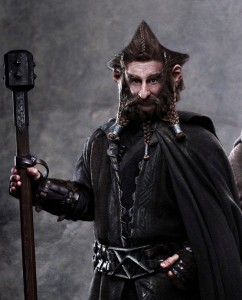 When I spent five weeks on “The Hobbit,” set, I was never given a script to read. I consider that a stroke of good fortune. Had I read one and after signing a NDA, I would be handcuffed to speculate on a lot of matters, including this one.
When I spent five weeks on “The Hobbit,” set, I was never given a script to read. I consider that a stroke of good fortune. Had I read one and after signing a NDA, I would be handcuffed to speculate on a lot of matters, including this one.
Instead, just like any person anywhere, I have evaluated the book carefully and the appendices. I have read Jackson’s quotes over and over. I have daydreamed about scenes I hope are included in the films. I have tried to think cinematically. I have spent an absurd amount of time coming to a conclusion I trust.
I think I have an answer.
“The Hobbit: An Unexpected Journey,” will end (at least in my mind until the cinema shows me otherwise) at the conclusion of a major conflict and a narrow escape. You can see it on the chart above. My conclusion is that it goes something like this: Frodo frames the story for Bilbo. After a good deal of setting the table in Bag End (savor that pun), the journey begins. We meet trolls. Before long bad luck and Goblins show up, combat mayhem ensues, Bilbo is lost, he Riddles in the Dark, by luck he joins Thorin and Company again but pursued by goblins and wolves, they get out of the frying pan and into the fire. The rescue from there makes a grand film ending for me, grand indeed. Audiences will feel satisfied but also hunger for more. The first six chapters of “The Hobbit,” along with considerable historical background make for — at least in my mind — a really strong trilogy opening.
The second film, Smaug’s conflict, seems most obvious and agreed on by the whole of the internet. Others have claimed the final film will not have enough material. I see heaps of book content; There are politics, the aftermath of destruction, race tension, the antics of a certain burglar, the gathering of troops from regions of Middle-earth, secret bird messengers, intricate and highly personal character conflict, a big magnificent battle and finally, the wrapping up of all the loose threads. It feels to me like it works very well as a closing to three films.
If nothing else, Warner Bros., MGM, New Line Cinema and Jackson have given us six more months of fun anticipation. If you read this whole thing, I should probably buy you a soda.
Larry D. Curtis is a senior staff member at TheOneRing.net but his opinions are his own. The website, established in 1999, remains not-for-profit and is run by its all-volunteer staff.




